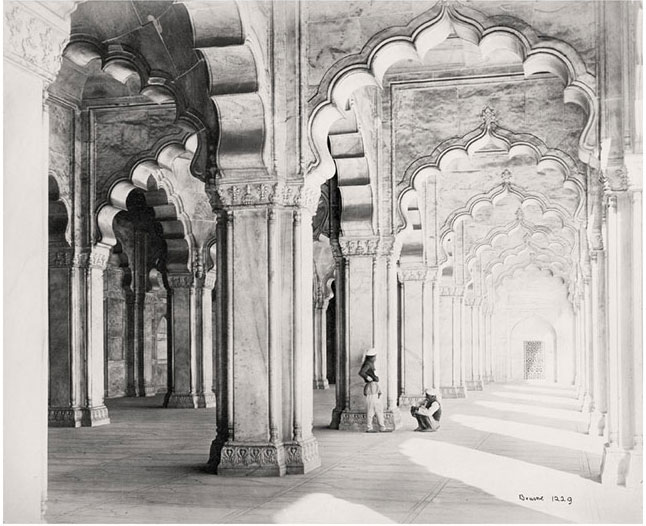Tasveer and Exhibit 320 are delighted to announce the opening of Bourne & Shepherd: Figures in Time in New Delhi on the 28th of May 2016.
Part of Tasveer’s 10th anniversary celebrations, this exhibition of 19th century vintage photographs sourced from the rich photographic holdings of MAP (Museum of Art & Photography, Bangalore), includes a range of landscapes, architectural views and portraits by the photographers Samuel Bourne, Charles Shepherd and the Bourne & Shepherd studio.
One of the most famous of the early European commercial photographers, and the most prolific photographer of the ‘picturesque’ tradition, Samuel Bourne, a former bank clerk, arrived in India in 1836. Bringing with him a large amount of photographic equipment, developing local contacts here, and having access to Indian bearers, Bourne travelled the subcontinent widely — producing over 2 000 negatives including some of the finest nineteenth century travel photography.
Initially partnering with William Howard, Bourne set up the Howard & Bourne studio in Shimla. They were joined by Charles Shepherd, and with the leaving of William Howard, the studio dropped his name to become Bourne & Shepherd. In 1866, in alignment with a growing culture of studio-photography, the Bourne & Shepherd establishment set up a branch in Calcutta, where it still trades as one of the oldest studios in the world, to this day.
One of the most prestigious studios of its time, it was patronised heavily by royalty, nobility, Europeans, Indians and a mushrooming upper middle class; and certain to be commissioned for special events such as the Delhi Durbar (some images of which form part of this
exhibition).
Though Shepherd was also a photographer of some standing, he became more known as a master printer, staying back to head the business side of operations; and was somewhat overshadowed by Bourne, who soon became the primary photographic expert on India, travelling the length and breadth of the subcontinent. Known for his architectural and topographical (especially mountain and hill views) photography, Bourne’s work immortalised the Indian landscape and was fervently consumed by the British public — primarily in the form of postcards, book illustrations and views for albums.
The nature of this form of distribution, coupled with the available technology of the time, meant that these images were primarily realised in a relatively small size. One of the highlights of this exhibition, is its reproduction of select prints in enlarged ratios that allows viewers a unique insight into these historically significant photographs from a contemporary moment.
The exhibition is accompanied by the publication of a catalogue that carries an original essay by Hugh Ashley Rayner, prolific British author and scholar of early Indian photography, on the life and works of Samuel Bourne.

